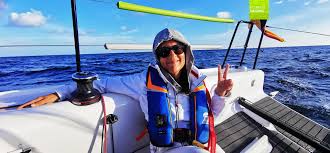Understanding Seasickness
Seasickness is a common affliction that many sailors encounter during their nautical adventures. Even the most experienced sailors aren’t exempt; under certain conditions, anyone can feel unwell at sea. This article delves into the causes, prevalence, and practical solutions for seasickness, enhancing the sailing experience for enthusiasts and newcomers alike.
What Causes Seasickness?
Based on physiological research, seasickness is predominantly a result of “sensory incongruity” – when the inputs received by the brain from the inner ear, eyes, and deeper body systems conflict with one another. As a result, the brain gets confused, often leading to that queasy feeling. Surprisingly, certain demographics are more susceptible:
- Children: Typically, children under the age of two rarely experience seasickness.
- Older Adults: Adults over 50 show decreasing vulnerability.
- Gender Influences: Research indicates that women, particularly during pregnancy or menstruation, are more likely to experience motion sickness.
- Health Conditions: Individuals with vestibular damage or those prone to migraines may also find themselves affected.
Historical Remedies for Seasickness
Historically, methods to combat seasickness varied immensely. In ancient China, folk remedies included consuming child urine or white sand-syrup. European sailors had their quirks too; remedies ranged from drinks containing cod stomach stones to ingesting turf from graveyards. Ironically, alcohol was often the go-to solution in many societies, whether it worked or not!
Modern Approaches to Prevention
Today, a combination of empirical evidence and scientific insight offers valuable avenues for preventing seasickness.
Before Setting Sail
Preparation is key. Here are some tips for a smooth sailing experience:
- Rest Well: A good night’s sleep before your journey helps maintain stability.
- Avoid Alcohol: Steering clear of alcoholic drinks prior to departure can be beneficial.
- Eat Smart: A protein-rich meal can be a game-changer.
- Hydrate: Ensuring adequate hydration helps counteract dehydration, which can worsen seasickness symptoms.
The Importance of ‘Sea Legs’
Vestibular habituation is a gradual approach that can significantly improve one’s tolerance to motion. This entails spending time on a boat prior to longer voyages, which helps the body acclimatize.
Effective Strategies While Underway
Once at sea, there are several strategies to consider that may ease discomfort:
- Stay on Deck: Fresh air can be refreshing; residing on deck or in the cockpit provides relief.
- Keep Your Eyes on the Horizon: This stabilizes the brain’s input and can effectively mitigate nausea.
- Avoid Close Vision: Steering clear of reading or tasks requiring focused vision can help maintain equilibrium.
- No Strong Odors: Minimize exposure to diesel and other strong smells that can trigger nausea.
Over-the-Counter Options
There are several medications available that can aid in combatting seasickness. The most effective include:
| Medication | Form | Anteckningar |
|---|---|---|
| Meclizine | Tablet | Available over-the-counter, effective for short trips. |
| Dimenhydrinate | Tablet | Also readily available; can help prevent sickness. |
| Scopolamine | Patch | Prescription-based; best for longer voyages, applied behind the ear. |
Dealing with Seasickness
In cases where seasickness does strike, immediate actions may help alleviate symptoms:
- Remain Hydrated: Even small sips of water can combat dehydration.
- Sodium-Rich Solutions: Consuming broth or instant soups helps restore vital electrolytes.
- Rest: Lying down—optimal position—helps the body cope.
- Medication Support: Using anti-emetics like promethazine can bring relief.
Caring for an Ailing Crew
A compassionate approach is crucial when managing seasickness among crew. Ensure the affected individual is in a comfortable position, ideally lying down, to expedite recovery. Continuing normal duties under such conditions is seldom beneficial.
A Cautionary Note
It’s essential to remember that seasickness doesn’t point to cowardice or weakness. Historical figures known for their maritime prowess also faced this challenge. Recognizing symptoms and addressing them can make sailing’s wonders more accessible.
Exploring Your Adventure with GetBoat
At GetBoat, attention is always directed toward enhancing the sailing experience and seaside vacations through user-friendly solutions. The freedom to explore the open sea is a cornerstone of our service, allowing clients to find vessels tailored to their desires and budget. Whether renting a boat for solitude, a romantic getaway, or a group adventure, options abound to suit every taste.
Slutsats
Seasickness is a multifaceted issue but manageable with the right strategies. A fascinating part of sailing, knowing how to address it not only enhances one’s experience but also embraces the diverse cultural and natural aspects of each destination. When venturing out to sea, renting a boat can lead to unique explorations through various inlets, bays, and lagoons—all reflective of the region’s rich tapestry as much as the local cuisine and architecture. So, if you’re ready to plan your sailing adventure, consider the possibilities offered at GetBoat.com, ensuring that your approach to the sea is filled with excitement and discovery!

 Tackling Seasickness While Sailing: Insights and Solutions">
Tackling Seasickness While Sailing: Insights and Solutions">
